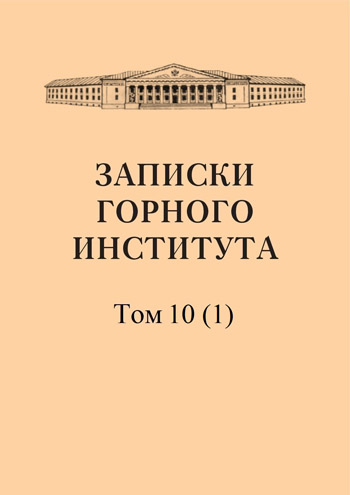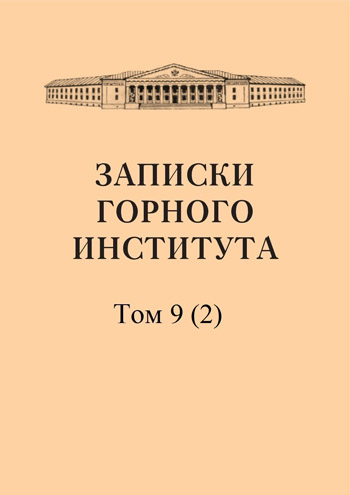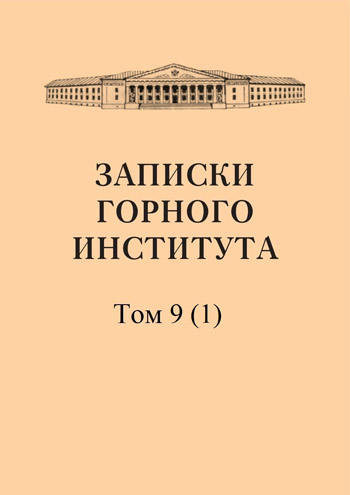-
Date submitted1934-07-05
-
Date accepted1934-09-05
-
Date published1935-01-01
On the movement of a heavy point along a helical line on a rough surface (To the theory of a spiral separator)
- Authors:
- M. I. Akimov
In this work, the elementary conclusions are presented and a number of new surfaces are indicated that can find application in the theory of a spiral separator and represent, with proper selection, known advantages over an ordinary oblique helical surface, both in the sense of achieving greater stability of the screw movement occurring on them, and and, if possible, an appropriate choice of the distribution of velocities of the masses moving along them. This work also presents new results related to the study of the stability of the considered movement along a helical line on a rough surface, and the influence on this movement is clarified: 1) the resistance of the medium, 2) the rotation of the surface around the vertical axis of the helical lines located on it.
-
Date submitted1934-07-08
-
Date accepted1934-09-01
-
Date published1935-01-01
Numerical example of determining the trajectory of a heavy point moving with friction along a helical surface with a curved generatrix (To the theory of a spiral separator)
- Authors:
- V. A. Egunov
The theory of a spiral separator is based on the study of the movement of a heavy point along a rough helical surface. The article carries out the integration of differentiated equations of motion of a heavy point along a helix on a rough surface, which has a curvilinear generatrix. As Prof. M.I. Akimov points out, this surface can be used to build sorting machines. The movement of a heavy point along this surface is carried out at a vertical speed, regardless of the helical line of movement.
-
Date submitted1934-07-24
-
Date accepted1934-09-21
-
Date published1935-01-01
On the theory of a spiral separator (About the movement with friction of a heavy point along a helical surface)
- Authors:
- N. P. Neronov
The theory of a spiral separator, as well as a similar theory of a screw descent, has been very little developed. Therefore, it should be noted that Prof. L. B. Levenson attempted to carry out a constructive calculation of the separator based on an analysis of the movement of the enriched material. The corresponding differential equations of motion were compiled by Prof. M. I. Akimov. Their integration in the first approximation is performed in this article. An essential role in the design of a spiral separator is played by the construction of projections onto the horizontal plane of the trajectories of moving particles (the so-called unloading diagram). The latter allows you to judge how suitable the designed separator is for the enrichment of a certain material. The author set as his task to give another method for constructing an unloading diagram, namely analytical, based on the integration of the differential equations of motion in the first approximation. This latter also makes it possible to highlight the feasibility of new forms of spiral separator proposed by prof. M. I. Akimov. The question of how large the error of the first approximation is our further task.
-
Date submitted1934-07-08
-
Date accepted1934-09-09
-
Date published1935-01-01
To the ball mill theory
- Authors:
- N. P. Neronov
The motion of balls in a ball mill was the subject of research by White (1905) and Davis (1920), who considered the trajectories of the outer row of balls after they were separated from the drum wall to be parabolic. However, some experimenters in their collective work indicate that the balls, during their free movement, are thrown further than is assumed by the theory mentioned above. This circumstance was not taken into account by the theories of White and Davis. Therefore, it seems advisable to reconsider the old theory of the ball mill in order to clarify it and take into account the mutual pressure of the balls during their relative motion with respect to the drum. The subject of our next study will be the trajectory of the outer row of balls. Let us note first of all that usually the moment of separation of the ball from the wall of the drum is identified with the moment of separation from the underlying ball. Meanwhile, in reality these moments do not coincide. During the time passing between them, the lower ball continues to exert pressure on the upper one and thereby influences the nature of thetrajectory of the latter.
-
Date submitted1934-07-25
-
Date accepted1934-09-14
-
Date published1935-01-01
Quantitative assessment of the refined theory of motion of balls in a ball mill
- Authors:
- L. V. Arnold
The refined theory of the motion of the outer row of balls in a ball mill takes into account the relative motion of the uppper ball to the lower ball, which is at relative rest with respect to the drum. To determine this relative motion of the refinement, the theory gives two differential equations (see article). This work is devoted to a quantitative assessment of the new theory. The author of the article studies the movement of the outer row of balls in a ball mill, observing the movement of the upper ball relative to the movement of the lower ball. Each specific numerical example is the moment when the upper ball separates from the lower ball.
-
Date submitted1934-07-11
-
Date accepted1934-09-10
-
Date published1935-01-01
Calculation of characteristics for crushing in ball mills
- Authors:
- A. I. Zagustin
We are talking about fine grinding in ball mills. Two constants have been adopted, one of which relates to the structure of the substance and characterizes its disintegration upon impact, the other - the rate of fragmentation in given conditions. We derive a differential equation to characterize the substance whose solution is given. We then move on to consider special cases and ultimately give a method for determining the constants according to the characteristics of the material.
-
Date submitted1934-07-10
-
Date accepted1934-09-09
-
Date published1935-01-01
About the Weierstrass-Routh theorem
- Authors:
- K. V. Melikov
As is known, Lagrange in his “Analytical Mechanics”, when presenting the theory of small oscillations of a system of points, made the incorrect statement that when the roots of the characteristic equation are multiplicity, the terms containing integer powers of time outside the signs of sine and cosine always appear in the solution. The error of this statement was indicated in 1858 by Weierstrass, who, however, considered only a special case of a system of equations containing terms with second-order derivatives and terms linear with respect to the required functions. Rouse, in his treatise on the stability of motion, considered the general case of equations also containing terms with first derivatives. This note is devoted to the same issue. Without containing significantly new results, it aims to provide an exhaustive study of the conditions under which the so-called secular terms are absent in the solution of a system of linear homogeneous equations of the 2nd order of the most general form. It is based on the Cauchy method of integrating linear equations, i.e. the same method that Weierstrass used when studying the above-mentioned special case. The advantage of this method is its naturalness: we look for expressions for the coefficients in the general integral of the system and, equating them to zero, obtain the required conditions.
-
Date submitted1934-07-16
-
Date accepted1934-09-15
-
Date published1935-01-01
Calculation of windings of electromagnetic separators
- Authors:
- A. Ya. Sochnev
Calculation of the electromagnetic system of a magnetic separator, like almost any electromagnetic device or device, consists of two points: calculation of the magnetic circuit of the system and calculation of its winding. This article outlines a general method for calculating the windings of magnetic separators, which is based on the principle of maximum winding efficiency, which allows choosing the optimal values of winding parameters in each individual case. The proposed method can also be used when calculating other electromagnetic mechanisms (taking into account the specific features of these mechanisms), in cases where the calculation of the windings can be carried out independently of the calculation of the magnetic circuit.


